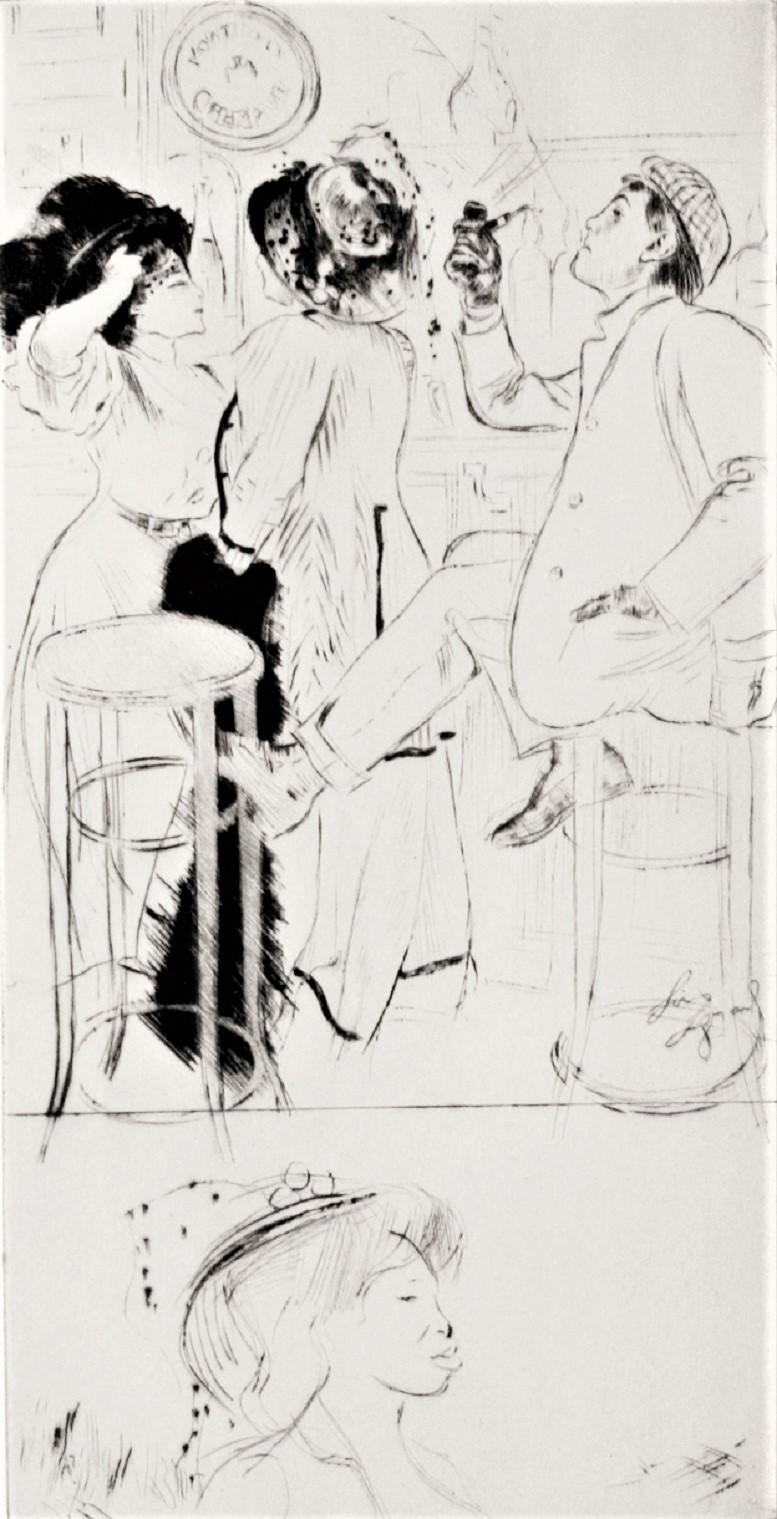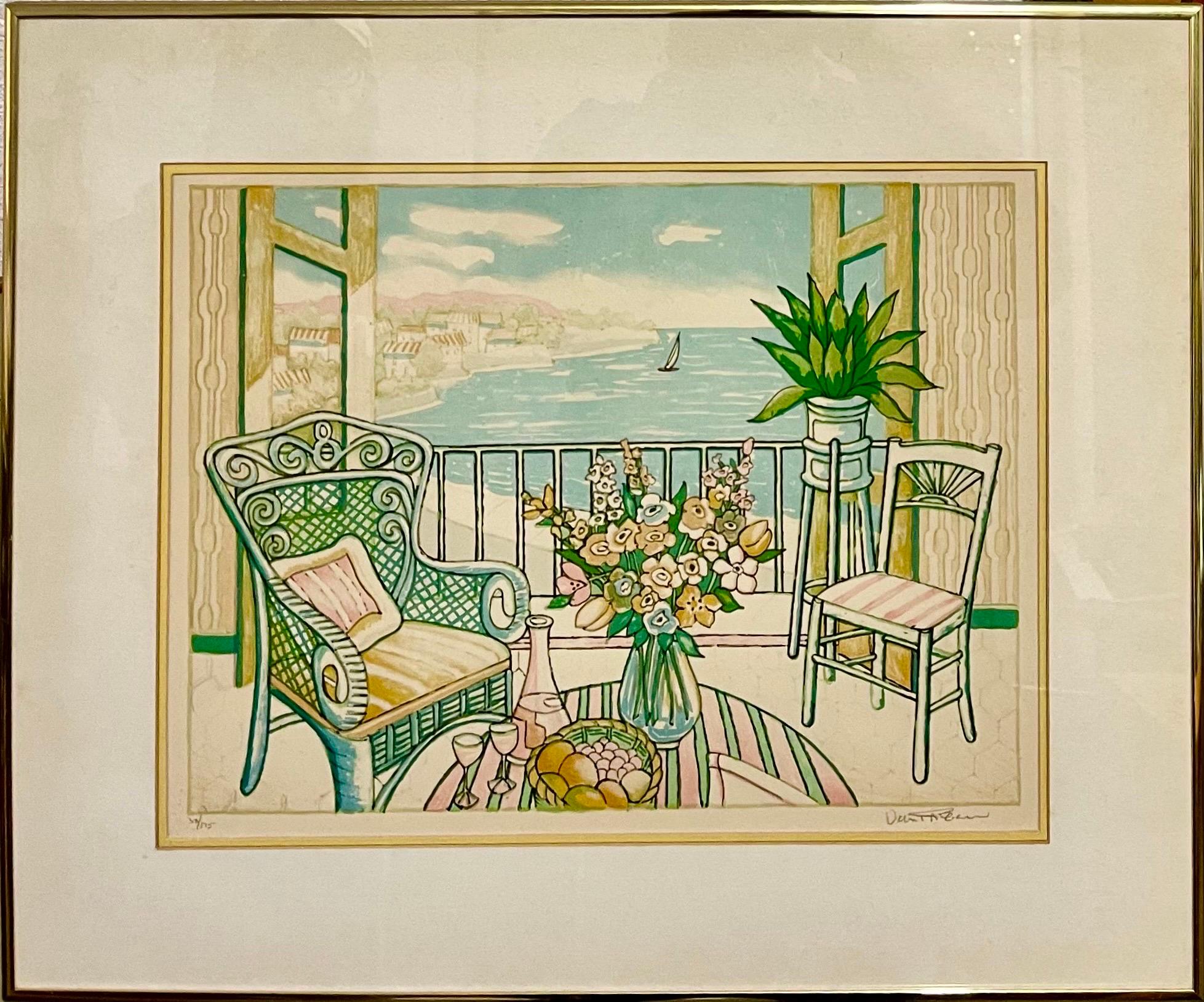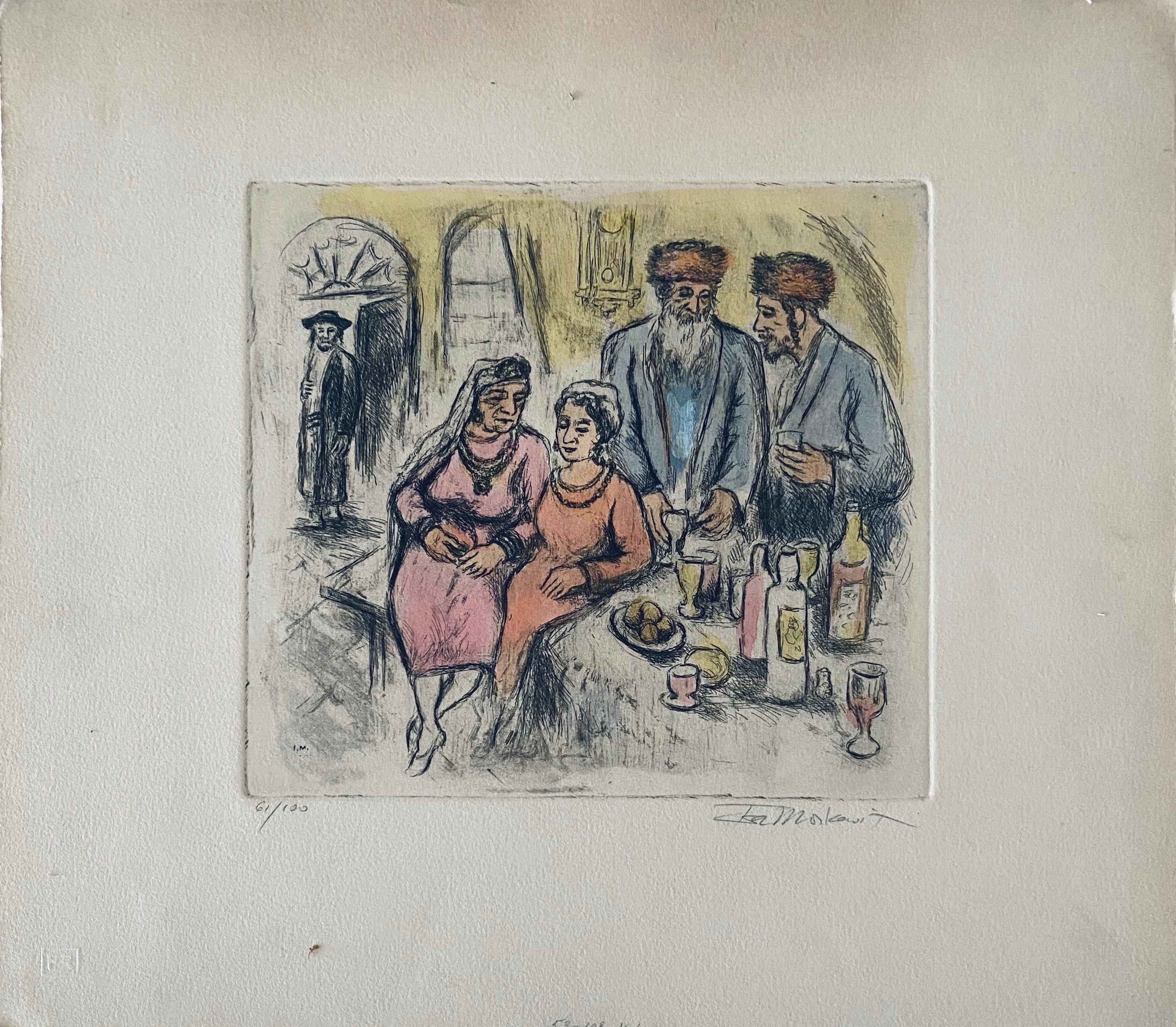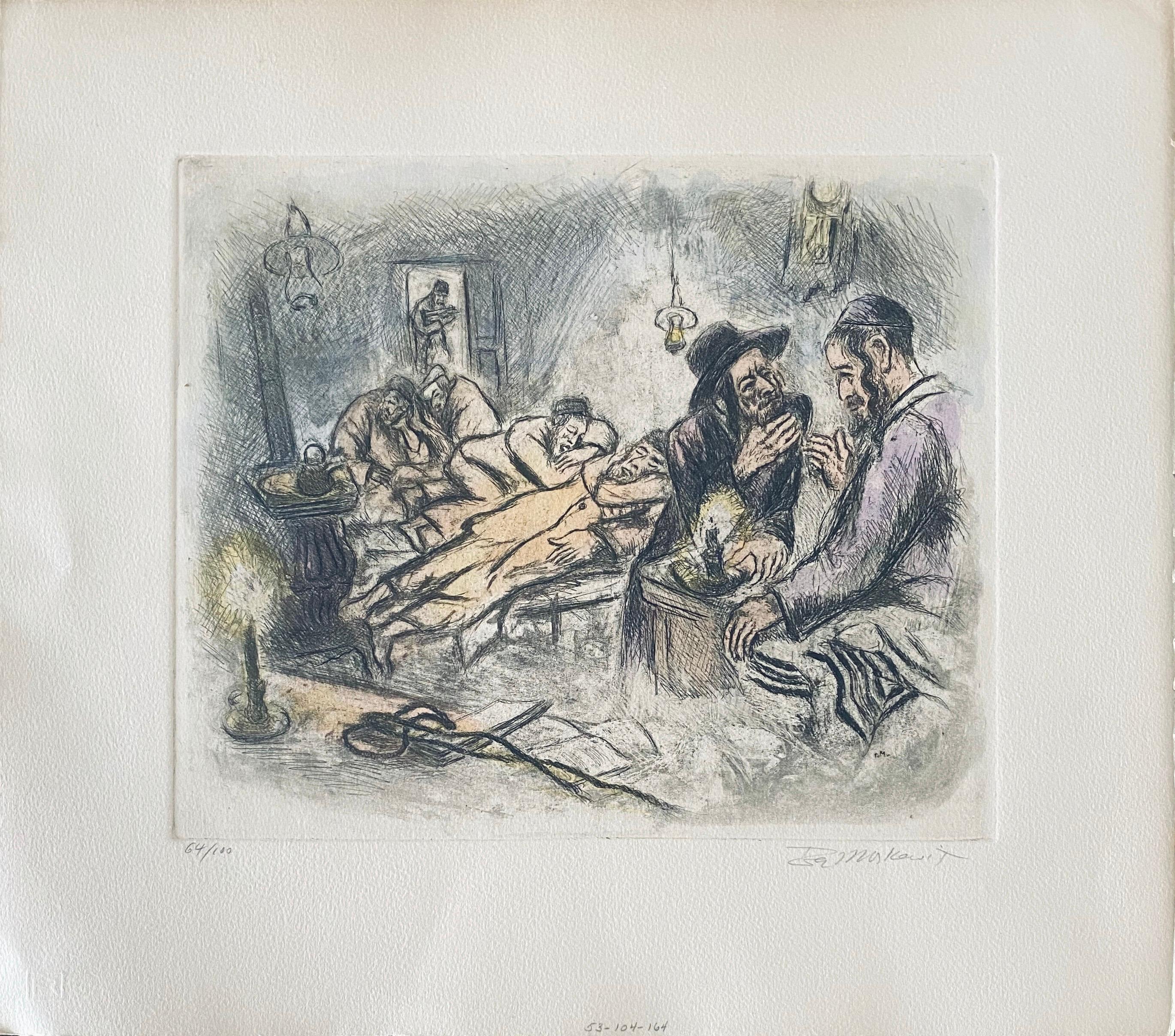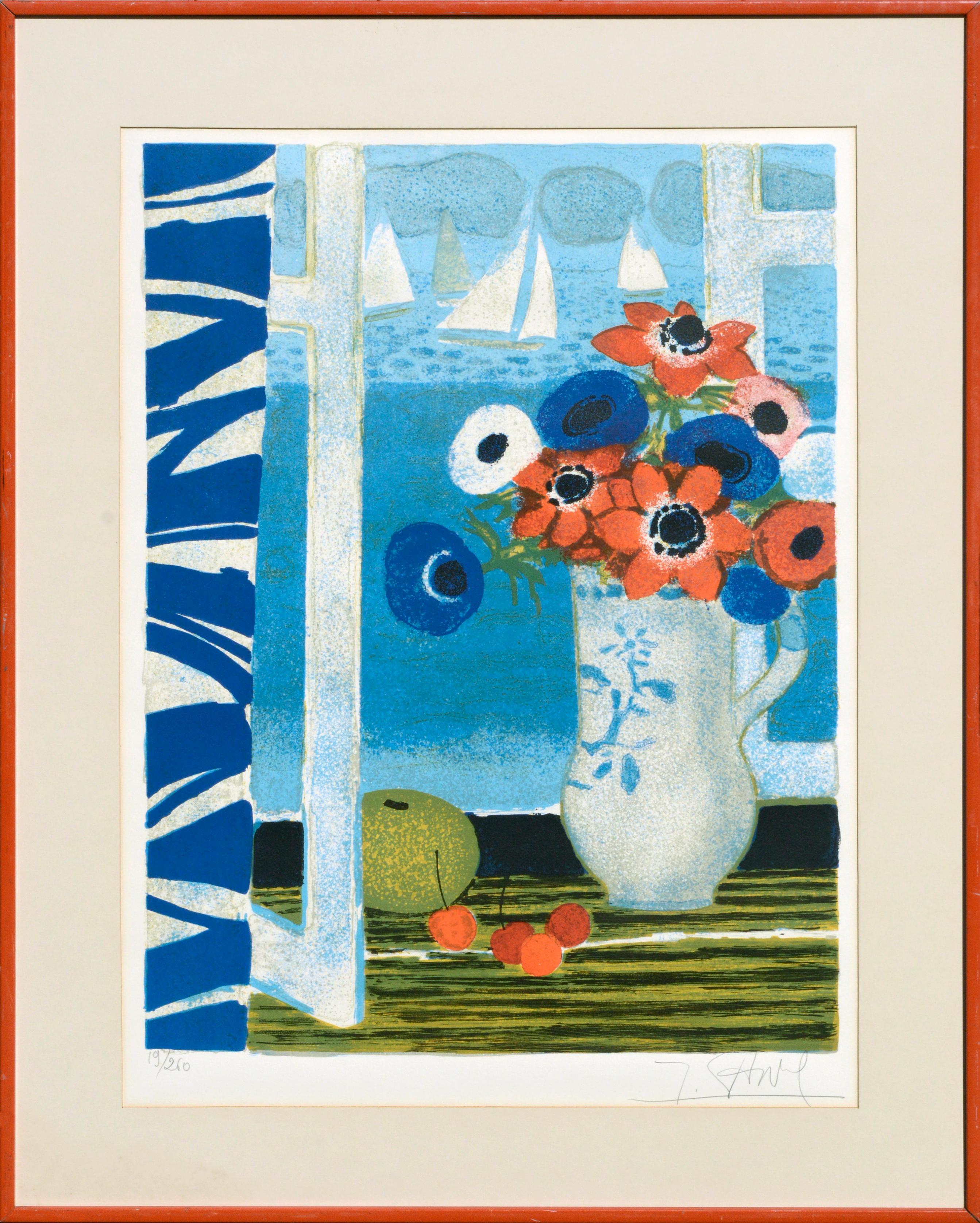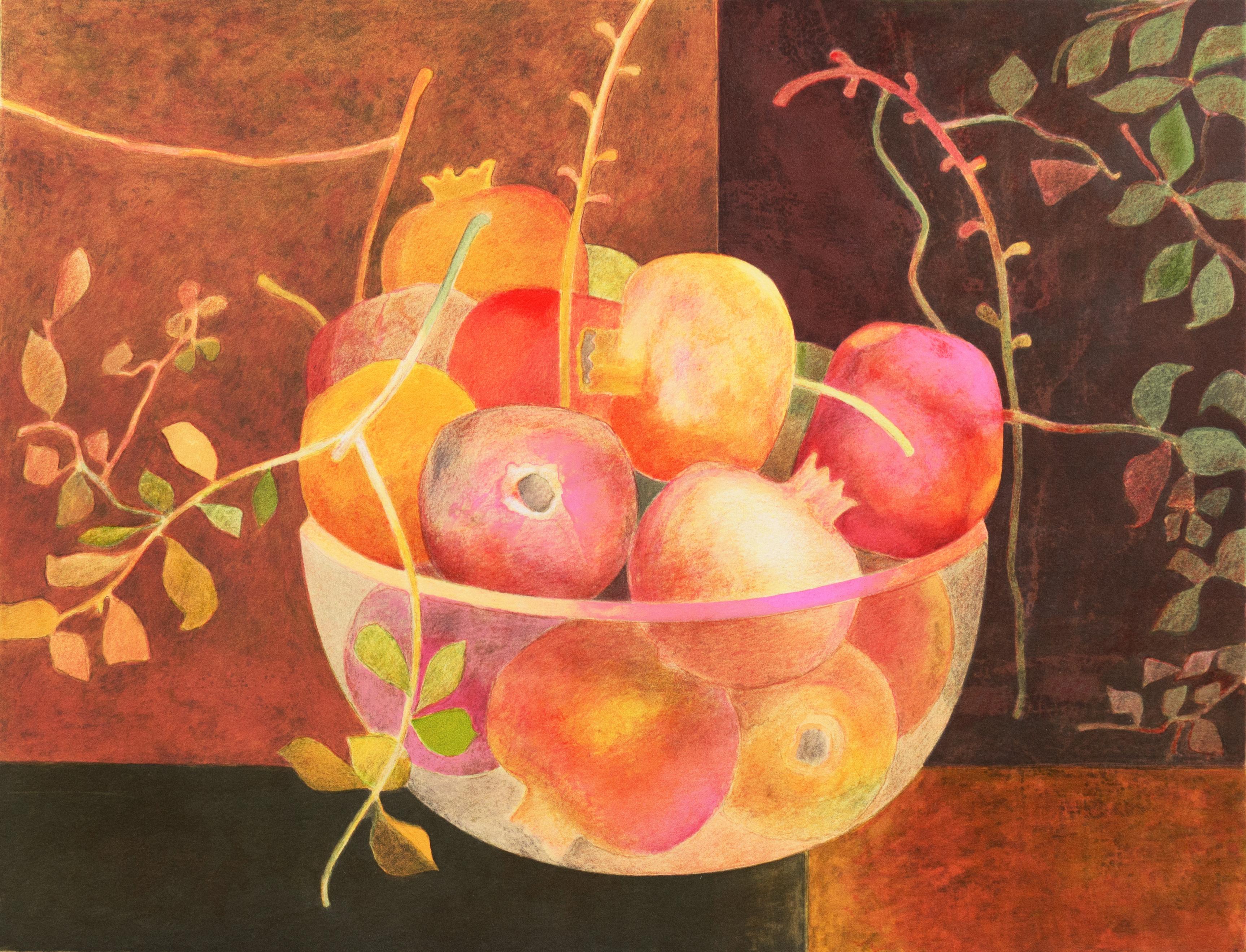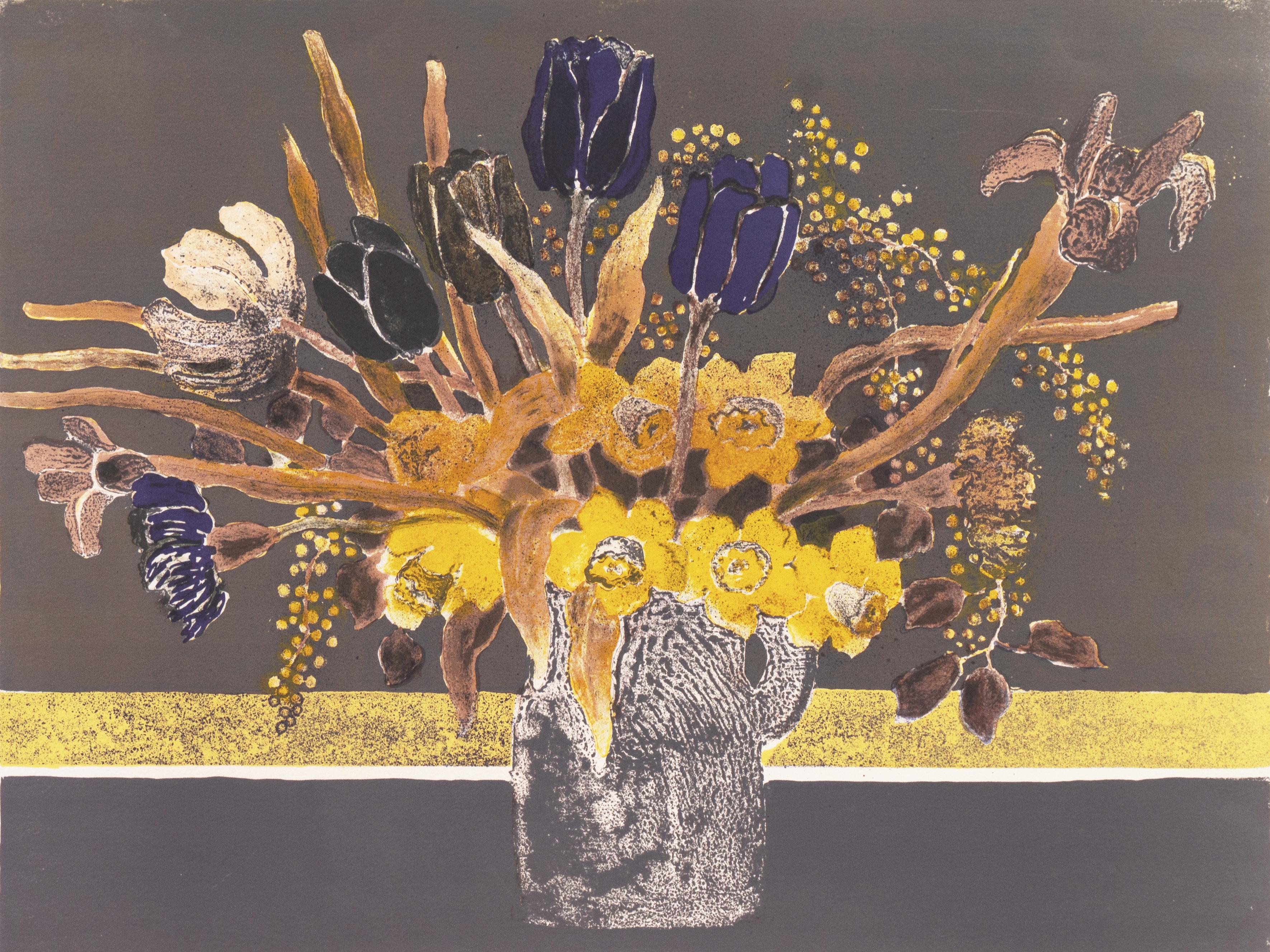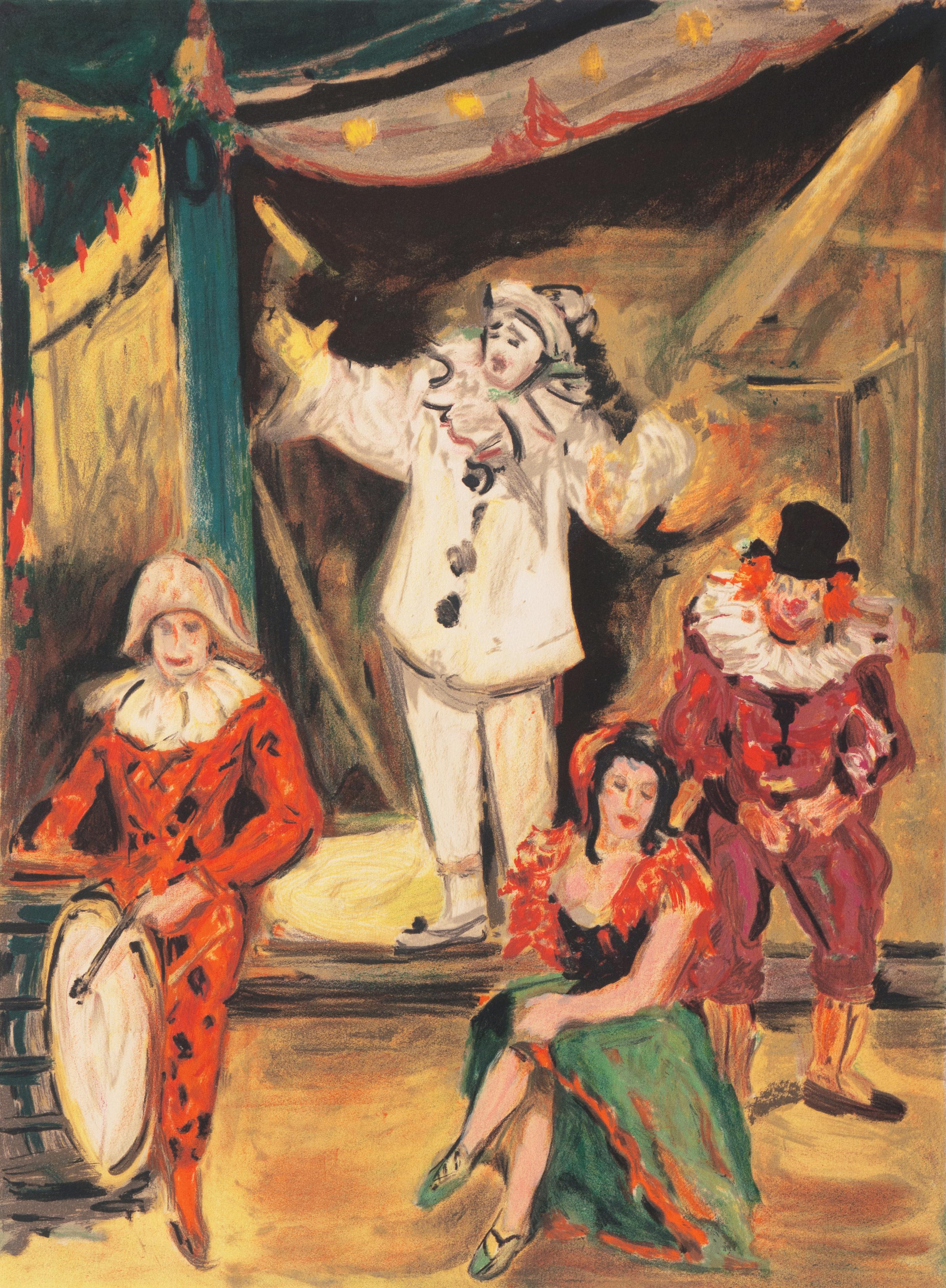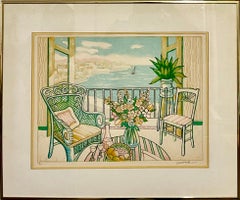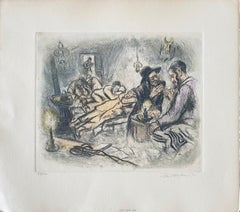
Judaica interior scene etching with hand coloring
Want more images or videos?
Request additional images or videos from the seller
1 of 9
Ira MoskowitzJudaica interior scene etching with hand coloring
About the Item
- Creator:Ira Moskowitz (1912, American)
- Dimensions:Height: 15 in (38.1 cm)Width: 17 in (43.18 cm)
- Movement & Style:
- Period:
- Condition:
- Gallery Location:Surfside, FL
- Reference Number:1stDibs: LU382116556
About the Seller
4.9
Platinum Seller
These expertly vetted sellers are 1stDibs' most experienced sellers and are rated highest by our customers.
Established in 1995
1stDibs seller since 2014
1,550 sales on 1stDibs
Typical response time: 1 hour
More From This SellerView All
- Vintage Fauvist Color Lithograph Porch Scene Jamaican Artist Van PittersonBy Lloyd Van PittersonLocated in Surfside, FLAfternoon Delight Wicker front porch chair and furniture. Framed 19 X 23 image is 13 x 17. Lloyd van Pitterson was born in Jamaica, West Indies. H...Category
20th Century Post-Impressionist Still-life Prints
MaterialsLithograph
- Judaica interior scene etching with hand coloringBy Ira MoskowitzLocated in Surfside, FLI believe the scene is of a wedding engagement. etching with extensive hand coloring (making it a unique original work of art) Ira Moskowitz (1912-2001), descendant of a long rabbinical line, was born in Galicia Poland and went with his family to Prague, Czechoslovakia, in 1914. The family remained there until 1927, and young Moskowitz received his first education in Prague's schools. Soon after, his family moved to New York City, and in 1927 Moskowitz became the pupil of Henry Wickey at the Art Students League, having finally resolved his conflict between a passion for drawing and a desire to follow the rabbinical profession of his forefathers. Between 1935 and 1938, he traveled to Israel and to Europe, Paris, France where he studied the works of the old masters, an interest derived from his first teacher and one that eventually led to his active collaboration in 1954 on the four-volume series, "Great Drawings of All Time." In 1939, Moskowitz made his first trip to Mexico, and stayed for six months. In 1943 he received a Guggenheim Fellowship and moved to New Mexico, where he remained for seven years drawing the Indians and becoming an active member of the Taos-Sante Fe artists group. It was in New York, as a student of Harry Wickey and Jerome Meyers at the Art Students League ( 1928 -32), that Moskowitz honed his talents as an artist. In the mid-to-late 1930s in Mexico, Ira was drawn to the traditions of the native peoples; in Israel, what was then British MandatePalestine he was absorbed with the religious ceremonies of the Hasidic Jews. The prints and drawings Moskowitz created in Mexico in 1941 earned him a Guggenheim Fellowship in 1943. In 1944, Ira and his wife, the artist Anna Barry moved to Taos, New Mexico. Moskowitz was entranced by New Mexico's light, landscapes, and cultures. By the time Ira arrived there, the region had already attracted Georgia O'Keeffe, Robert Henri, and Leon Gaspard...Category
20th Century Post-Impressionist Interior Prints
MaterialsLithograph
- Judaica interior scene etching with hand coloringBy Ira MoskowitzLocated in Surfside, FLEtching with extensive hand coloring (making it a unique original work of art) Ira Moskowitz (1912-2001), descendant of a long rabbinical line, was born in Galicia Poland and went with his family to Prague, Czechoslovakia, in 1914. The family remained there until 1927, and young Moskowitz received his first education in Prague's schools. Soon after, his family moved to New York City, and in 1927 Moskowitz became the pupil of Henry Wickey at the Art Students League, having finally resolved his conflict between a passion for drawing and a desire to follow the rabbinical profession of his forefathers. Between 1935 and 1938, he traveled to Israel and to Europe, Paris, France where he studied the works of the old masters, an interest derived from his first teacher and one that eventually led to his active collaboration in 1954 on the four-volume series, "Great Drawings of All Time." In 1939, Moskowitz made his first trip to Mexico, and stayed for six months. In 1943 he received a Guggenheim Fellowship and moved to New Mexico, where he remained for seven years drawing the Indians and becoming an active member of the Taos-Sante Fe artists group. It was in New York, as a student of Harry Wickey and Jerome Meyers at the Art Students League ( 1928 -32), that Moskowitz honed his talents as an artist. In the mid-to-late 1930s in Mexico, Ira was drawn to the traditions of the native peoples; in Israel, what was then British MandatePalestine he was absorbed with the religious ceremonies of the Hasidic Jews. The prints and drawings Moskowitz created in Mexico in 1941 earned him a Guggenheim Fellowship in 1943. In 1944, Ira and his wife, the artist Anna Barry moved to Taos, New Mexico. Moskowitz was entranced by New Mexico's light, landscapes, and cultures. By the time Ira arrived there, the region had already attracted Georgia O'Keeffe, Robert Henri, and Leon Gaspard...Category
20th Century Post-Impressionist Interior Prints
MaterialsEtching
- the Spirit of the Ghetto Screenprint British Pop Art RB Kitaj Judaica SilkscreenBy Ronald Brooks KitajLocated in Surfside, FLR.B. Kitaj (1932-2007) Spirit of the Ghetto Original seven color silkscreen on paper Signature: Hand signed by the artist in pencil lower right Edition: From the small, limited edition of 25, pencil numbered lower right 2/25 Sight Size: 23-1/2" x 17-1/2" Frame Size: 27" x 21.5" In Tate collection, London. Ronald Brooks Kitaj RA 1932 – 2007 was an American artist with Jewish roots who spent much of his life in England. He became a merchant seaman with a Norwegian freighter when he was 17. He studied at the Akademie der bildenden Künste in Vienna and the Cooper Union in New York City. After serving in the United States Army for two years, in France and Germany, he moved to England to study at the Ruskin School of Drawing and Fine Art in Oxford (1958–59) under the G.I. Bill, where he developed a love of Cézanne, and then at the Royal College of Art in London (1959–61), alongside David Hockney, Derek Boshier, Peter Phillips, Allen Jones and Patrick Caulfield. Richard Wollheim, the philosopher and David Hockney remained lifelong friends. "Through an earlier pre-occupation with turn-of-the-century intellectual life in Vienna (where he had started his art studies in the early 1950s), as well as an admiration for the Warburg Institute approach to the history of art-in-its-intellectual-context (since after Vienna he had moved to Oxford to study with the art historian Edgar Wind, before going on to the Royal College of Art) Kitaj has come to identify most strongly with the central European Jewish writer Franz Kafka, and with his sense of estrangement and of hidden mysteries. Illustrations to Kafka's aphorisms, imaginary portraits of his fiancée Felice and Count West-West who owned The Castle, appear in the Little Pictures, as do rapidly sketched portraits of Karl Kraus, Paul Celan, Leon Trotsky and Ludwig Wittgenstein, representations of Judeo-Christian mysteries of the hidden face of God. Kitaj settled in England, and through the 1960s taught at the Ealing Art College, the Camberwell School of Art and the Slade School of Art. He also taught at the University of California, Berkeley in 1968. He staged his first solo exhibition at Marlborough New London Gallery in London in 1963, entitled "Pictures with commentary, Pictures without commentary", in which text included in the pictures and the accompanying catalogue referred to a range of literature and history, citing Aby Warburg's analysis of symbolic forms as a major influence. He curated an exhibition for the Arts Council at the Hayward Gallery in 1976, entitled "The Human Clay" (an allusion to a line by W. H. Auden), including works by 48 London artists, such as William Roberts, Richard Carline, Colin Self and Maggi Hambling, championing the cause of figurative art at a time when abstract was dominant. In an essay in the controversial catalogue, he invented the phrase the School of London to describe painters such as Frank Auerbach, Leon Kossoff, Francis Bacon, Lucian Freud, Euan Uglow, Michael...Category
1970s Pop Art Figurative Prints
MaterialsScreen
- 1936 Lithograph Interregnum, Cigar, Kid w Toy Gun, Small Edition Weimar GermanyBy George GroszLocated in Surfside, FLHand lithography on BFK Rives French hand moulded paper Style: German New Objectivity (Neue Sachlichkeit) According to the frontis these were produced by Hand Lithography. According...Category
1930s Modern Interior Prints
MaterialsLithograph
- 1936 Lithograph Interregnum Portfolio Butcher Shop Small Edition Weimar GermanyBy George GroszLocated in Surfside, FLHand lithography on BFK Rives French hand moulded paper Style: German New Objectivity (Neue Sachlichkeit) According to the frontis these were produced by Hand Lithography. According...Category
1930s Modern Interior Prints
MaterialsLithograph
You May Also Like
- SportsmenBy Louis LegrandLocated in Storrs, CTSportsmen. 1908. Etching and drypoint. Exsteens 271.i/ii. 11 1/4 x 5 3/4 (sheet 17 3/8 x 12 1/4). Series: Les Bars. From the first state edition of 30 proofs with the remarque sketch...Category
Early 1900s Post-Impressionist Figurative Prints
MaterialsDrypoint, Etching
$875 Sale Price50% Off - Flowers and Fruit in Front of the Window Still Life- School of ParisBy Yves GanneLocated in Soquel, CABrightly colored lithograph still-life by Yves Ganne (French, b. 1931). Signed "Y. Ganne" in the lower right corner. Numbered "19/260" in the lower left corner. Presented in a tan ma...Category
Late 20th Century Post-Impressionist Still-life Prints
MaterialsPaper, Ink, Screen
- Tavern - Etching by Marcel Gromaire - 1952By Marcel GromaireLocated in Roma, ITTavern is a black and white etching on paper, realized in 1952 by Marcel Gromaire (1892-1971). Monogrammed on plate on the lower left corner. Good conditions except for some foxing...Category
1950s Post-Impressionist Figurative Prints
MaterialsEtching
$307 Sale Price20% Off - "La Conversation" Large original lithographBy Jean-Pierre CassigneulLocated in San Francisco, CAThis art work titled "La Conversation" 1991 is an original color lithograph on wove paper by French artist, Jean Pierre Cassigneul, born 1935. It is h...Category
Late 20th Century Post-Impressionist Figurative Prints
MaterialsLithograph
- View on the Artist Workshop - Stone lithograph - Mourlot 1982By Jules CavaillesLocated in Paris, FRJules CAVAILLES View on the Artist Workshop Original stone lithograph in colors (printed in atelier Mourlot) Numbered / 200 On Arches vellum 76 x 56 ...Category
1980s Post-Impressionist Interior Prints
MaterialsLithograph
- Model : Sweet Day at Home - Original Lithograph Handsigned and N° (Mourlot)By Alfred DefossezLocated in Paris, FRAlfred Defossez Interior scene, 1973 Original lithograph (Mourlot workshop) Handsigned in pencil Justified HC On Japan paper 76 x 54 cm (c. 29,9 x 21,2 inch) Very good condition, s...Category
1970s Post-Impressionist Interior Prints
MaterialsLithograph
Recently Viewed
View AllMore Ways To Browse
Thomas Hart Benton Lithographs
George Washington Etching
John Sloan Etchings
John Sloan Etching
Wood Judaica
Leon Israel
Thomas Hart Benton Original
Henry Jacob
Reginald Marsh Lithographs
Storm Arrives
Sloan Master
Prague Jewish
Isaac Jacob
Reginald Marsh Etching
Robert Dodge
Baumann Gustave
Benton Etching
Jack Andrew
